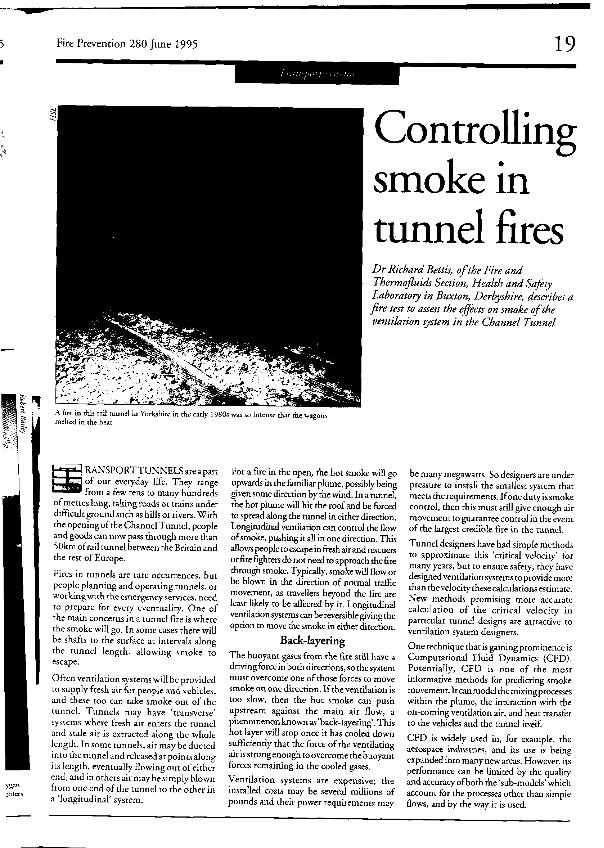Controlling smoke in tunnel fires

Contenido multimedia no disponible por derechos de autor o por acceso restringido. Contacte con la institución para más información.
| Tag | 1 | 2 | Valor |
|---|---|---|---|
| LDR | 00000nab a2200000 i 4500 | ||
| 001 | MAP20071023103 | ||
| 003 | MAP | ||
| 005 | 20080418120817.0 | ||
| 007 | hzruuu---uuuu | ||
| 008 | 950727e19950601gbr|||| | |00010|eng d | ||
| 040 | $aMAP$bspa | ||
| 084 | $a812.4 | ||
| 100 | 1 | $0MAPA20080123598$aBettis, Richard | |
| 245 | 1 | 0 | $aControlling smoke in tunnel fires$cRichard Bettis |
| 520 | $aFires in tunnels are rare occurrences, but people planning and operating tunnels, or working with the emergency services, need to prepare for every eventuality. One of the main concerns in a tunnel fire is where the smoke will go. In some cases there will be shafts to the surface at intervals along the tunnel length, allowing smoke to escape. Often ventilation systems will be provided to supply fresh air for people and vehicles, and these too can take smoke out of the tunnel. Tunnels may have "transverse" systems where fresh air enters the tunnel and stale air is extracted along the whole length. The "worst case" fire scenario identified by Eurotunnel and the CTSA was a fire on a vehicle being carried on one of Eurotunnel's purpose-built HGV shuttles | ||
| 650 | 1 | 1 | $0MAPA20080617424$aInvestigación sobre fuego |
| 650 | 1 | 1 | $0MAPA20080545611$aTúneles |
| 650 | 1 | 1 | $0MAPA20080560997$aVentilación |
| 650 | 1 | 1 | $0MAPA20080592097$aMovimiento de humos |
| 650 | 1 | 1 | $0MAPA20080612597$aSistemas de ventilación |
| 650 | 1 | 1 | $0MAPA20080571566$aCasos prácticos |
| 740 | 0 | $aFire prevention | |
| 773 | 0 | $wMAP20077000260$tFire prevention$dLondon$gnº 280, June 1995 ; p. 19-22 |

